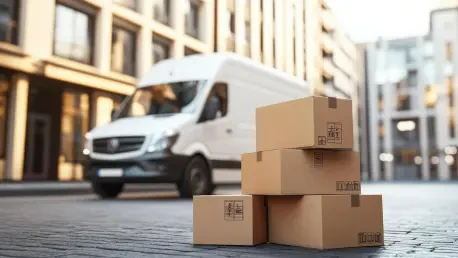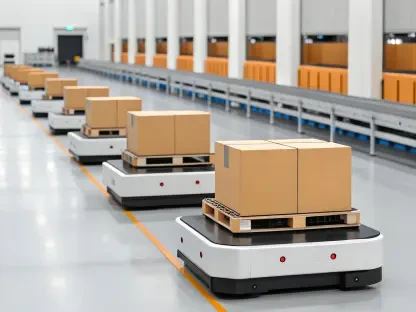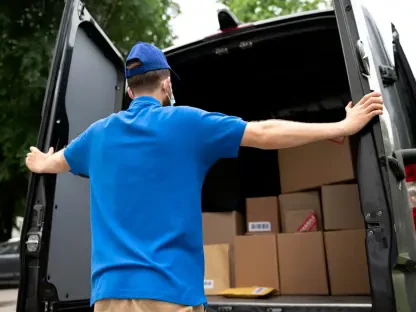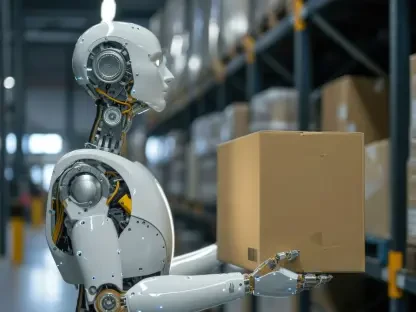Diving into the world of home improvement retail, we’re thrilled to sit down with Rohit Laila, a seasoned expert in logistics with decades of experience spanning supply chain management and delivery operations. Rohit’s passion for technology and innovation in the sector makes him the perfect person to unpack the strategies behind major players like Home Depot, especially as they navigate customer experience enhancements and operational challenges in 2025. In this conversation, we explore how speed, technology, and tailored tools are shaping the industry, the impact on customer satisfaction, and the hurdles faced in a competitive market.
How have recent investments in faster order fulfillment changed the game for home improvement retailers like Home Depot?
These investments are a game-changer. Retailers are pouring resources into streamlining their supply chains and delivery networks to get products to customers faster than ever. By leveraging advanced tracking systems and optimizing last-mile delivery, they’ve slashed wait times significantly. For instance, using a mix of distribution hubs and local stores as mini-warehouses ensures orders are fulfilled from the nearest location, cutting down delivery windows to same-day or next-day in many cases. This focus on speed isn’t just about logistics; it’s about meeting the modern customer’s expectation for instant gratification.
What role does balancing distribution centers and physical stores play in improving delivery efficiency?
It’s all about creating a seamless network. Distribution centers handle bulk inventory and large-scale orders, while stores act as local fulfillment points for quicker, smaller deliveries. This hybrid model reduces shipping costs and speeds up delivery by sourcing products from the closest point to the customer. However, it requires tight coordination—think real-time inventory tracking and dynamic routing software—to ensure the right product is pulled from the right place. When done well, it’s a powerful way to boost efficiency and keep customers happy.
Why is speed such a critical factor in driving customer engagement and sales in this industry?
Speed is everything in today’s retail landscape. Customers, whether they’re DIY enthusiasts or professional contractors, want their materials now, not later. When a retailer can deliver quickly, it builds trust and loyalty. It’s not just about the transaction; it’s about reducing downtime on a project. Faster delivery means a customer can start or finish their work sooner, which often leads to repeat business. Plus, in a competitive market, being the fastest option can be the deciding factor for where a customer shops.
Can you walk us through how technology like associate-facing apps contributes to better product availability in stores?
Absolutely. Apps designed for store associates are revolutionizing inventory management. These tools provide real-time data on stock levels, alert staff to low inventory, and even guide them to restock shelves efficiently. Some apps use location-based features to pinpoint exactly where an item is in the store or warehouse. This cuts down on the time associates spend searching for products and ensures shelves stay stocked, which directly improves the customer experience by reducing out-of-stock frustrations.
How is computer vision technology being utilized to enhance operations in retail environments?
Computer vision is a fascinating innovation. It’s essentially using cameras and AI to “see” what’s on the shelves in real-time. This tech can detect empty spots or misplaced items faster than any human could, sending alerts to staff to restock or reorganize. It’s a huge leap in maintaining on-shelf availability, which is critical for customer satisfaction. Beyond that, it reduces manual labor on inventory checks, freeing up associates for more customer-facing tasks. It’s still early days, but the potential to expand this into areas like theft prevention or customer behavior analysis is exciting.
What kind of impact have new digital tools for professional customers had on their workflow?
These tools are lifesavers for pros like contractors. Digital platforms for project planning allow them to map out materials, track orders, and manage deliveries all in one place. Feedback from users often highlights how much time they save—tasks that used to take hours or days, like creating material lists, are now done in minutes. Compared to old-school methods of manual lists and phone calls, these tools cut errors and streamline communication with suppliers, ultimately saving both time and money on the job.
Can you explain how specific technologies are replacing manual processes for complex project planning?
Sure, take tools that digitize blueprint takeoffs, for example. These platforms let pros upload plans and automatically calculate the exact materials needed, down to the last nail. What used to be a weeks-long, error-prone process of manually measuring and estimating is now accurate and nearly instant. This tech not only boosts precision—crucial for big, complex builds—but also builds confidence in project bids and timelines. It’s a prime example of how automation can transform a traditionally tedious task into a competitive edge.
Despite heavy investments in customer experience, some retailers have reported underwhelming quarterly results in 2025. What factors might be at play here?
It’s a tough landscape right now. Even with strong customer experience strategies, external pressures like economic uncertainty, a sluggish housing market, or unpredictable weather patterns can dampen demand. For instance, fewer major storms mean less urgent need for repair materials, a big driver in this sector. On top of that, consumer hesitancy to spend on big projects during uncertain times can hit sales hard. These factors often outweigh operational wins in the short term, making it a balancing act between long-term investments and immediate market realities.
What is your forecast for the future of customer experience innovations in the home improvement sector?
I’m optimistic about where this is headed. I think we’ll see even deeper integration of AI and automation, not just in logistics but in personalizing the customer journey—think tailored product recommendations or predictive inventory based on local trends. Speed will remain a priority, but the focus will also shift toward sustainability in delivery, like electric fleets or optimized routes to cut emissions. The challenge will be balancing tech investments with profitability, especially in fluctuating markets. But for retailers who get it right, the payoff in customer loyalty and market share will be huge.









